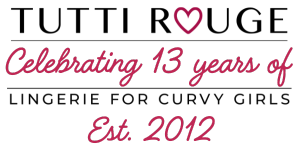What are the names of each bra component?
26 Aug 2024
0 Comments
A bra is made up of multiple components, each with a specific function. Understanding the names of these components can help you better understand how bras are constructed and how they fit. Here’s a breakdown of the key components of a bra:
1. Cups
- Definition: The cups cover and support the breasts, shaping them and providing coverage.
-
Types:
- Padded: Includes foam or other padding to enhance shape or add volume.
- Molded: Pre-formed cups that maintain their shape.
- Unlined: No padding, offering a more natural shape.
- Demi Cup: Covers about half to three-quarters of the breast, offering less coverage.
- Full Cup: Provides full coverage, offering maximum support.
2. Underwire
- Definition: A semi-circular wire or plastic piece sewn into the bottom edge of each cup.
- Function: Provides additional support and lift, especially in larger cup sizes.
3. Band (or Wing)
- Definition: The part of the bra that wraps around the ribcage, providing the primary support.
- Features: Usually has elastic for stretch and comfort, and may include additional structure in larger sizes.
4. Center Gore (or Bridge)
- Definition: The piece of fabric that connects the two cups at the front of the bra.
- Function: Helps anchor the bra in place and should lie flat against the sternum for a proper fit.
5. Straps
- Definition: The straps go over the shoulders to help hold the bra in place.
-
Types:
- Adjustable Straps: Can be lengthened or shortened for a better fit.
- Non-Adjustable Straps: Fixed length, often seen in some bralettes or specialty bras.
- Convertible Straps: Can be rearranged for different styles, such as crisscross or halter.
- Detachable Straps: Can be removed for strapless wear.
6. Hooks and Eyes
- Definition: The closure mechanism at the back of the bra, usually consisting of a series of hooks on one side and eyes (loops) on the other.
- Function: Allows for adjustable tightness around the ribcage, providing a customized fit.
7. Back (or Wing)
- Definition: The back part of the bra that connects the cups to the closure.
- Function: Provides stability and additional support, often with elastic for comfort.
8. Side Panels (or Side Wings)
- Definition: The fabric sections that extend from the outer edge of the cups to the back closure.
- Function: Helps shape the sides of the bust and provides additional support.
9. Side Boning
- Definition: Vertical, flexible strips of plastic or metal sewn into the side seams of the bra.
- Function: Provides additional structure to the side panels, preventing the band from rolling up and offering extra support.
10. Cup Lining
- Definition: The inner layer of the cup, which can be made of various materials.
- Function: Adds comfort, shape, and sometimes additional support.
11. Underband
- Definition: The elastic strip at the bottom edge of the band that helps anchor the bra in place.
- Function: Provides additional support and helps keep the bra from shifting.
12. Gusset (or Gore)
- Definition: The triangular piece of fabric at the center where the cups meet, at the bottom.
- Function: Adds strength and structure to the front of the bra.
13. Bridge (or Cradle)
- Definition: The fabric that sits between the cups and extends down to where the band begins.
- Function: Helps support the structure of the bra, particularly in larger sizes.
14. Apex
- Definition: The point where the strap meets the cup at the top of the breast.
- Function: The apex is crucial for the fit and positioning of the bra on the body.
15. Wings (or Sides)
- Definition: The parts of the bra that extend from the cups under the arms to the back closure.
- Function: Helps keep the bra in place and contributes to the overall fit and support.
16. Cup Seams
- Definition: The seams in the cups that can be either vertical, horizontal, or diagonal.
- Function: Provides shape and structure to the cups.
17. Trim and Embellishments
- Definition: Decorative elements such as lace, bows, or embroidery.
- Function: Enhance the aesthetic appeal of the bra without affecting functionality.
Understanding the different components of a bra can help you make more informed choices about fit, comfort, and style. Each part plays a specific role in how the bra functions and feels, making it essential to choose bras that are well-constructed and appropriate for your body shape and needs.









































































































